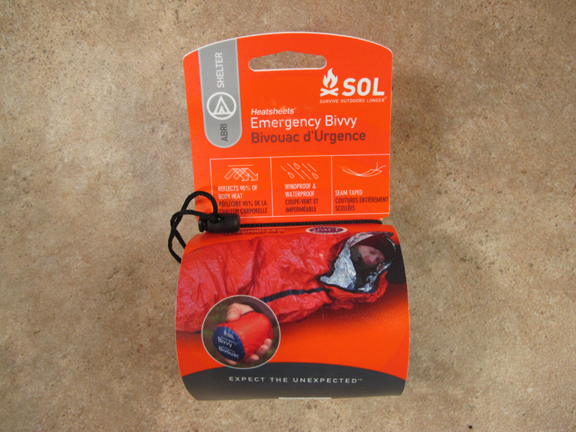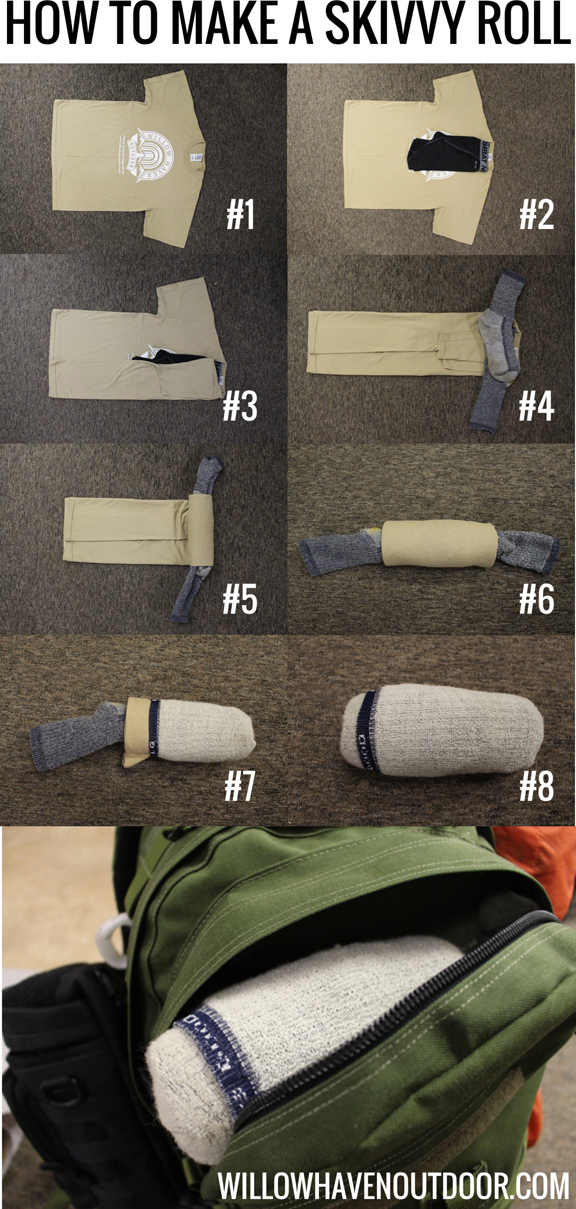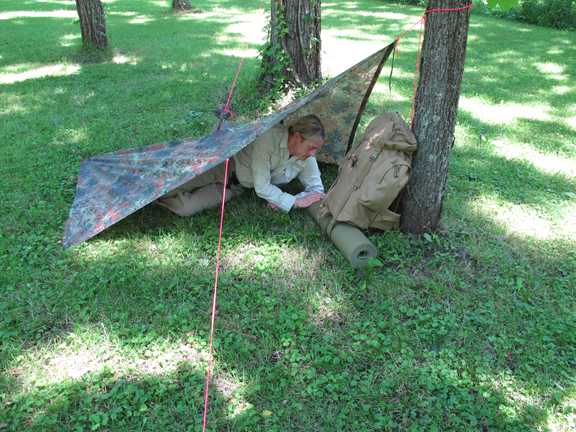Is it time for BOB to go on a diet???
One very popular question I get is about Bug Out Bag weight. Unfortunately, it’s never that there is TOO MUCH space left over in the pack. I’m always ask for ideas about how to reduce pack weight and eliminate unnecessary items. Below are 6 tips I’ve come up with for cutting weight from your BOB. Hopefully, one will work for you or at least help you brainstorm a creative solution.
I’ve found that when you’re really getting serious about cutting Bug Out Bag weight then you must go through your pack one item at a time. You can’t just look at your pack from across the room and hope to come up with weight saving ideas. This needs to be a methodical and strategic process that involves deliberate thought and consideration about every single piece of kit in your BOB. This is a perfect process for a rainy Sunday afternoon.
TIP #1: Trim the Food Fat
By this, I mean cut out everything that has to do with food except for 6 high calorie energy bars (I pack CLIF bars). The average human can survive for 3 weeks without food and still have no ill effects to the body. In fact, I read one time that the record human fast was 1 year. That makes eating less during a 72 hour Bug Out seem more than possible! I’m not suggesting not to eat at all during a Bug Out, I’m simply suggesting to cut out all the food related items that you don’t need and only pack high calorie energy bars. Things to remove include stoves, fuel canisters/tabs, pots, pans, silverware, spices – EVERYTHING related to cooking and eating food. This stuff is bulky, heavy and at the end of the day, unnecessary for a 72-hour Bug Out. DATREX Rations are another compact calorie dense food option.
TIP # 2: Sleep System
Let’s face it, sleeping bags are one of the bulkiest and heaviest items in our BOBs. I’ve long experimented with ways to reduce weight and bulk in the sleeping department. One solution I’ve discovered is to go with a lighter and smaller higher degree bag. Some of the new 50 degree rated bags are only $30-$60 and pack down to about the size of a small melon. This alone isn’t sufficient for cold weather Bug Outs. A way to add about 20 degrees to a bag like this and drop it to a 30 degree bag is to combine it with a reflective emergency bivvy like the SOL Emergency Bivvy (combo seen above). It’s certainly not as comfortable as a nice fluffy ZERO degree bag but it sure weighs a lot less and takes up a lot less space if you need to drop weight in your BOB. You’ll probably notice some condensation in the bivvy but a couple shakes and a few minutes in open air and it dries out quick.
TIP # 3: Every Ounce Counts
Take a lesson from ultra light weight backpackers who literally account for every ounce of weight in their pack and weigh it on a scale. Their motto is “Every Ounce Counts” and if there’s a way to cut out an ounce they will find it. Some strategies I’ve heard of are:
- Trimming the edges from maps (I’m not kidding)
- Cutting down the tooth brush handle
- Using lighter weight ‘tooth powder’ instead of tooth paste
- Trimming unnecessary pieces from packs such as removing the sternum strap if you don’t use it
- Cutting tags out of cloths, sleeping bags and sacks
- If your electronics use AA batteries then find replacements that don’t use batteries at all or that use lighter weight AAA instead
- Use titanium where possible; pots, pans, mugs, bottles, stoves, utensils, tent stakes. It’s expensive but it’s as light as it gets.
- Put pills and medicines in zip-lock bags instead of prescription bottles
- Drill holes in stuff. Anything that you can drill a hole in without affecting function will cut weight.
Along these same lines, try to stay true to the Bug Out timeline of 72-hours. Try to only pack what you need for that specific timeline. If you’ve tossed in a roll of dental floss, consider measuring out what you need for three days instead. Same goes for soap, deodorant, etc. You may be able to cut down the portions for several items in your pack. This will certainly reduce weight.
TIP # 4: Clothing Items
Extra clothing is a luxury, not a necessity. From a hygiene standpoint you should only be concerned about an extra set of underwear, socks and t-shirt. Consider the clothes you’re wearing when you leave the house to be your only set (so dress in weather appropriate clothing BEFORE evacuating). Then, for the sake of hygiene, pack only one SKIVVY ROLL. A military friend of mine introduced me to the phrase SKIVVY ROLL. It’s a way of neatly folding your socks, underwear and t-shirt into a nice compact bundle. Folded this way, these items are easy to pack and easy to find and pack down into a surprising small little bundle. Below is a photo tutorial about how to make a SKIVVY ROLL.
TIP # 5: Replace Your Tent Shelter with a Tarp Shelter System
I personally pack a lightweight backpacking tent in my BOB – actually strapped to the outside as you can see in the photo. However, a tent is a luxury. You can really cut weight if you decide to pack a couple sil-nylon tarps instead. Of course, constructing a tarp shelter certainly takes more skill than assembling a tent. This reduction in pack weight does come with sacrifices. First, tarp shelters are not as good as tents – I don’t care how you set them up. I’ve slept in both many, many times and I’ll always prefer a tent except for the occasional perfect 40 degree fall night in October. Tarp shelters always have at least one open wall which allows for the entry of a variety of nuisances – moisture, insects, snow, light, smoke, etc. Below is one of my favorite tarp configurations that I call THE WEDGE. A tarp can be erected this way in under 1 minute and provides excellent protection from the elements. NOTE: Wind direction comes toward the back!
TIP # 6: Replace Gear with Knowledge
You’ve all heard it before: Knowledge weighs nothing. But boy does it takes up time! Some would rather pack the weight than spend the time.
Knowledge takes time. Some would rather pack the weight than spend the time. -Creek Stewart
However, the more you learn about shelter, water, fire and food, the less gear you’ll need to pack – period. I’ve long been a fan of redundancy in the CORE FOUR Survival Needs: SHELTER, WATER, FIRE and FOOD. I often recommend that people carry a back up fire starter, or a water filter or emergency shelter in addition to their tent but these redundant items become less necessary as your level of practice and experience increases. Is there an area where you can replace weight with knowledge?
Yo, you gotta tip?
What have you guys done to cut weight in your BOB? I’m sure there are some really creative ideas out there that others can learn from and implement as well. Don’t be shy, do tell.
Remember, it’s not IF but WHEN










